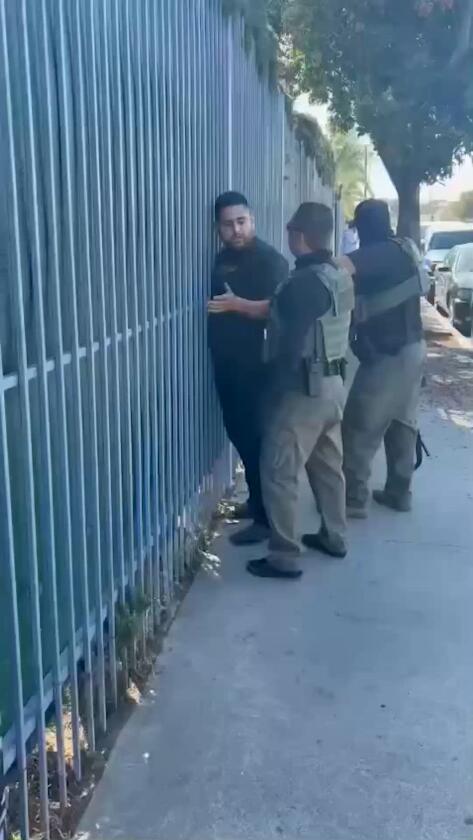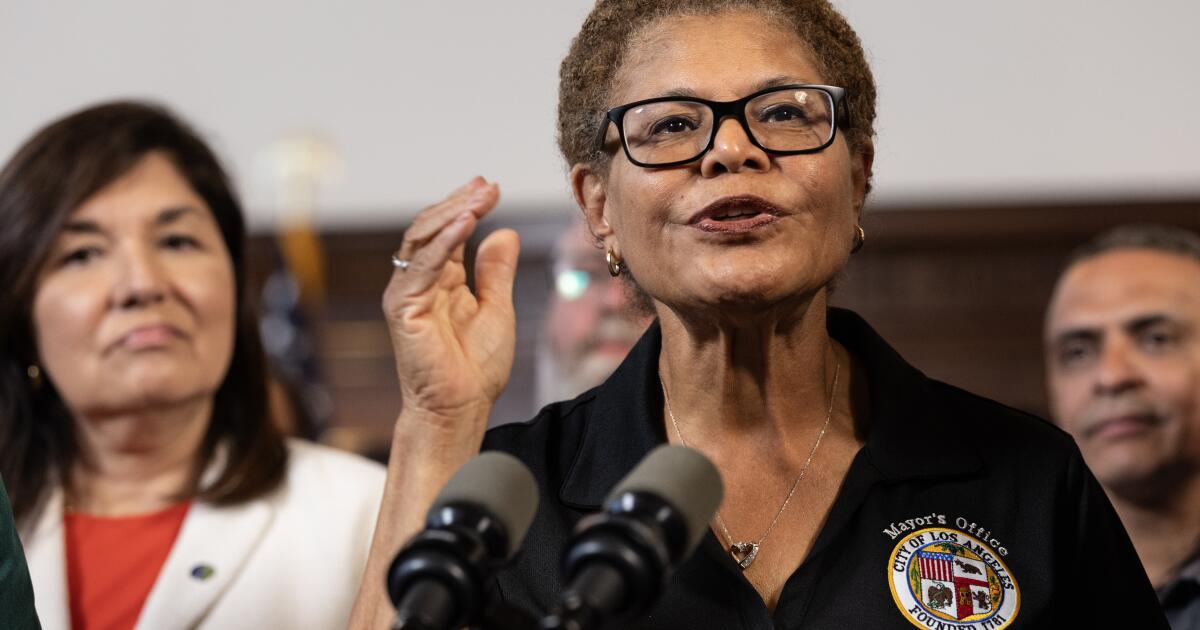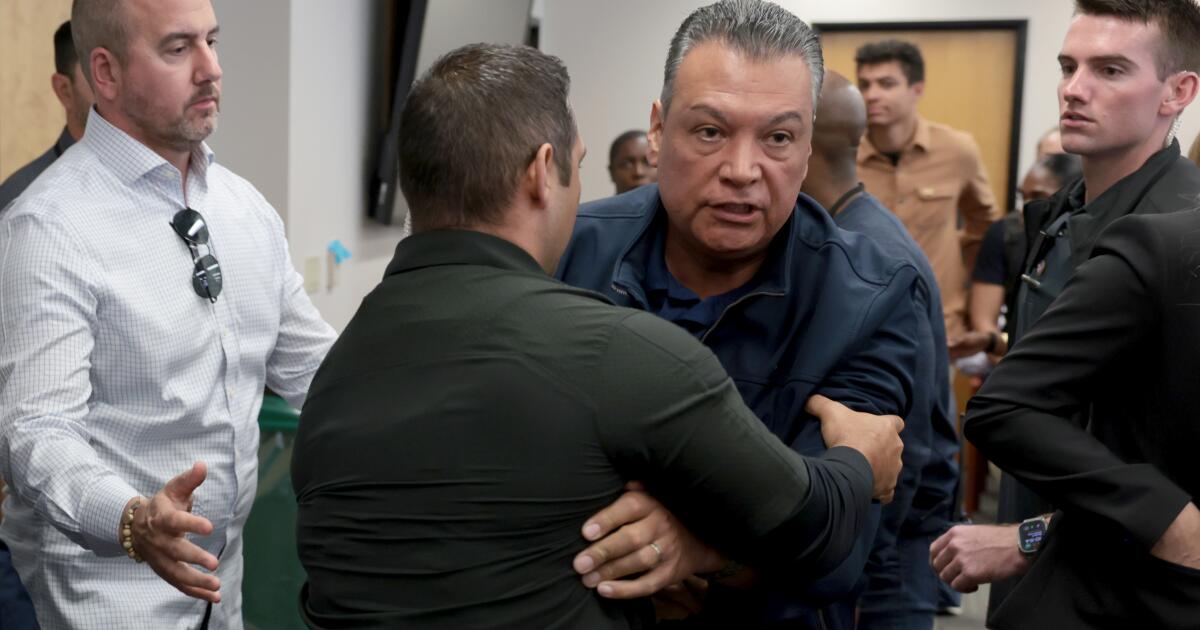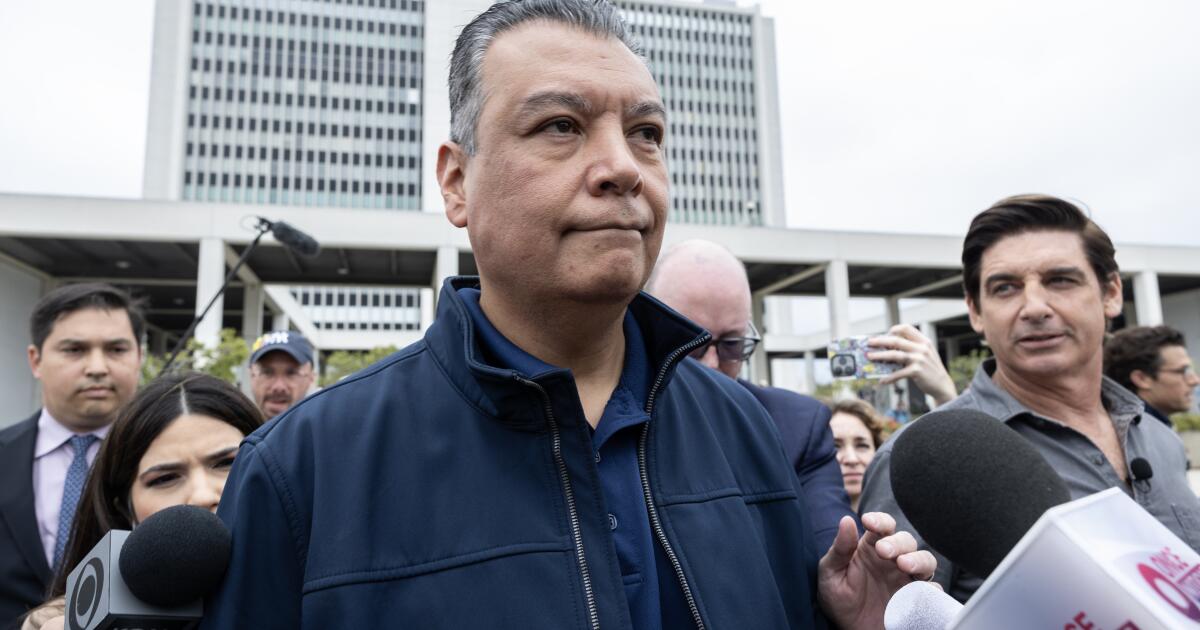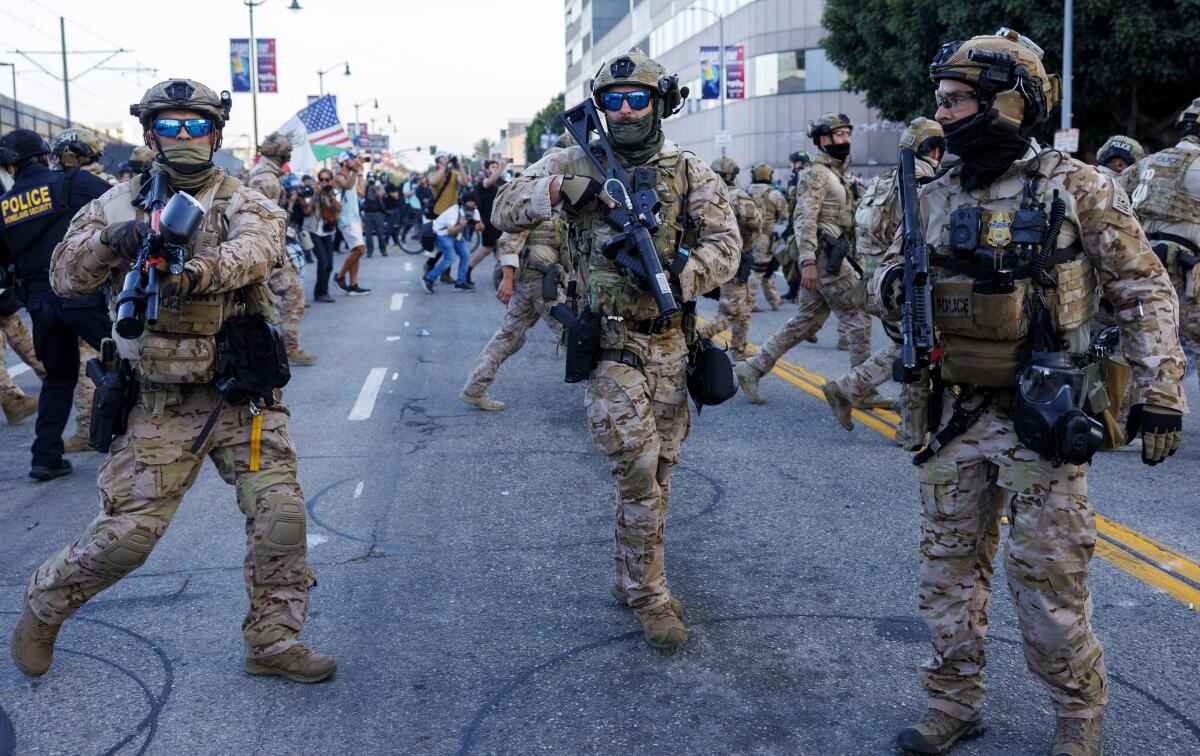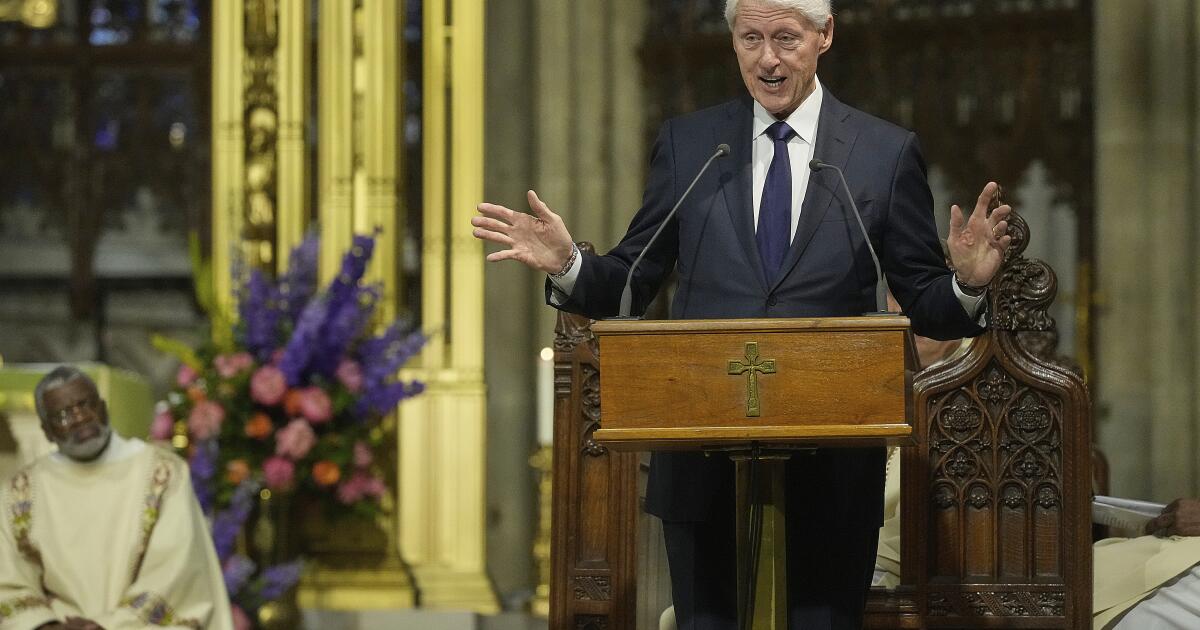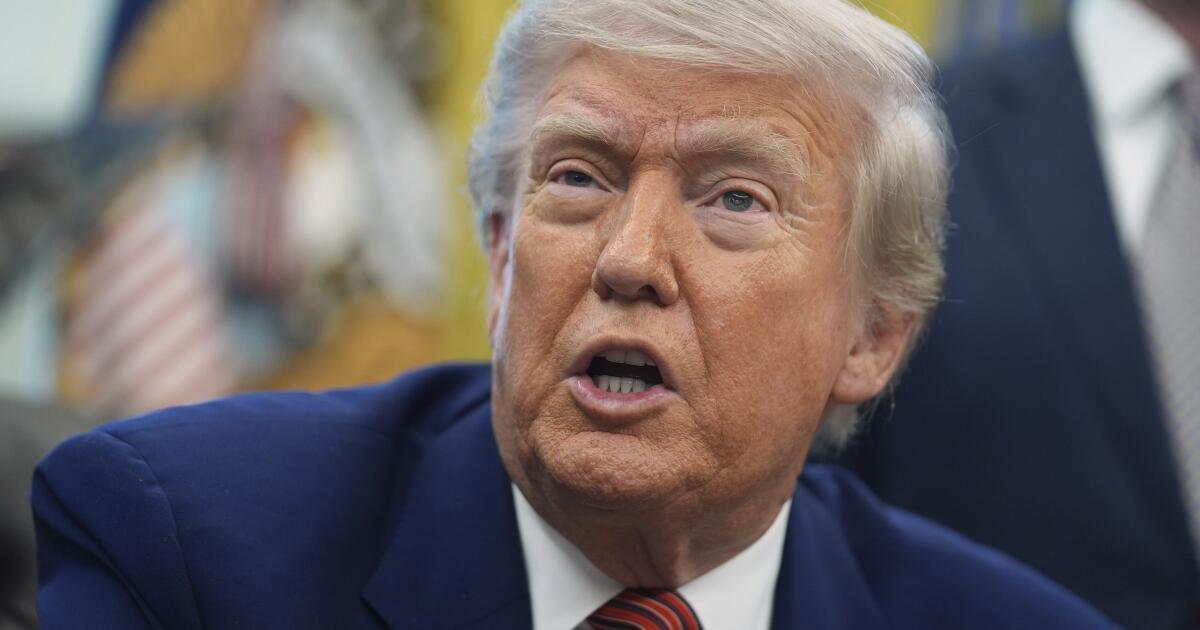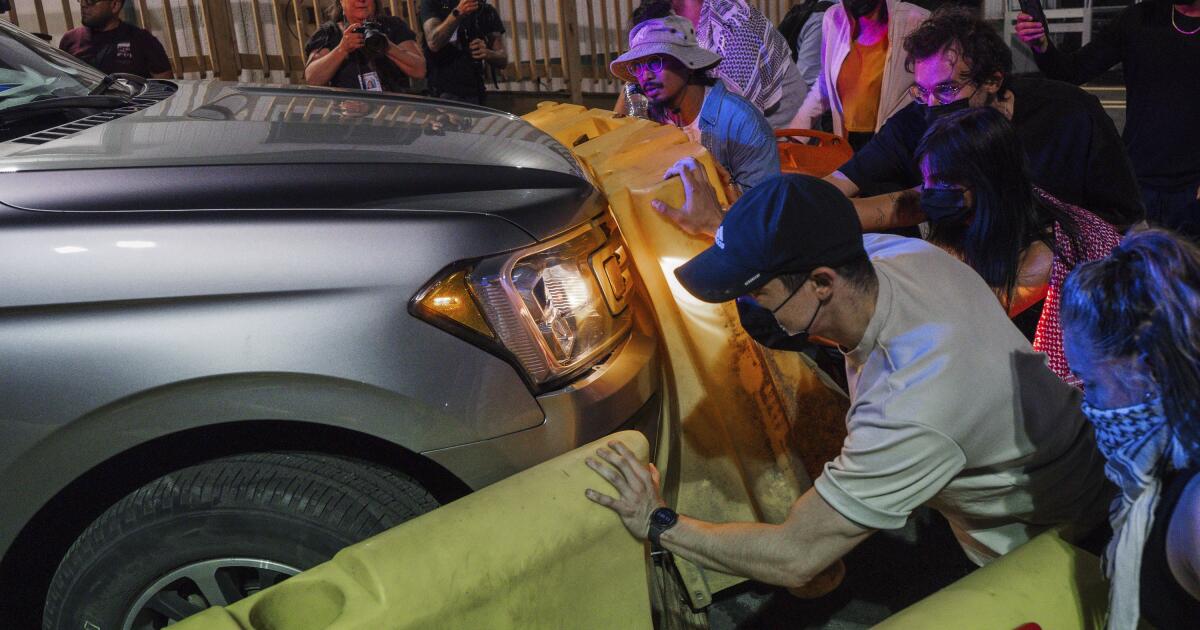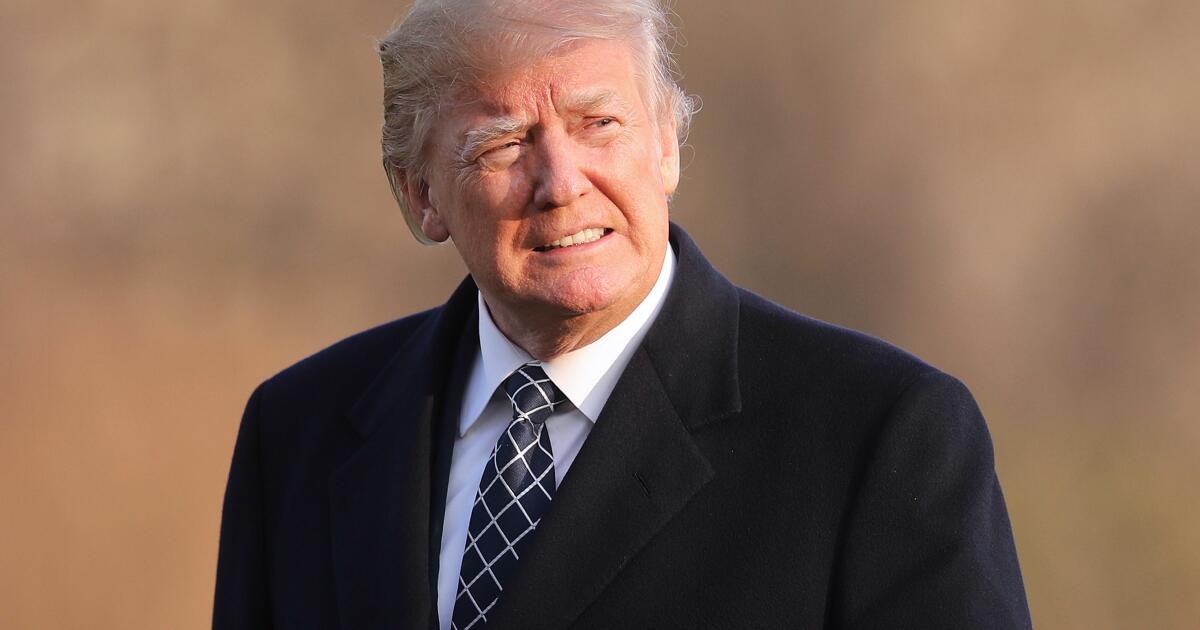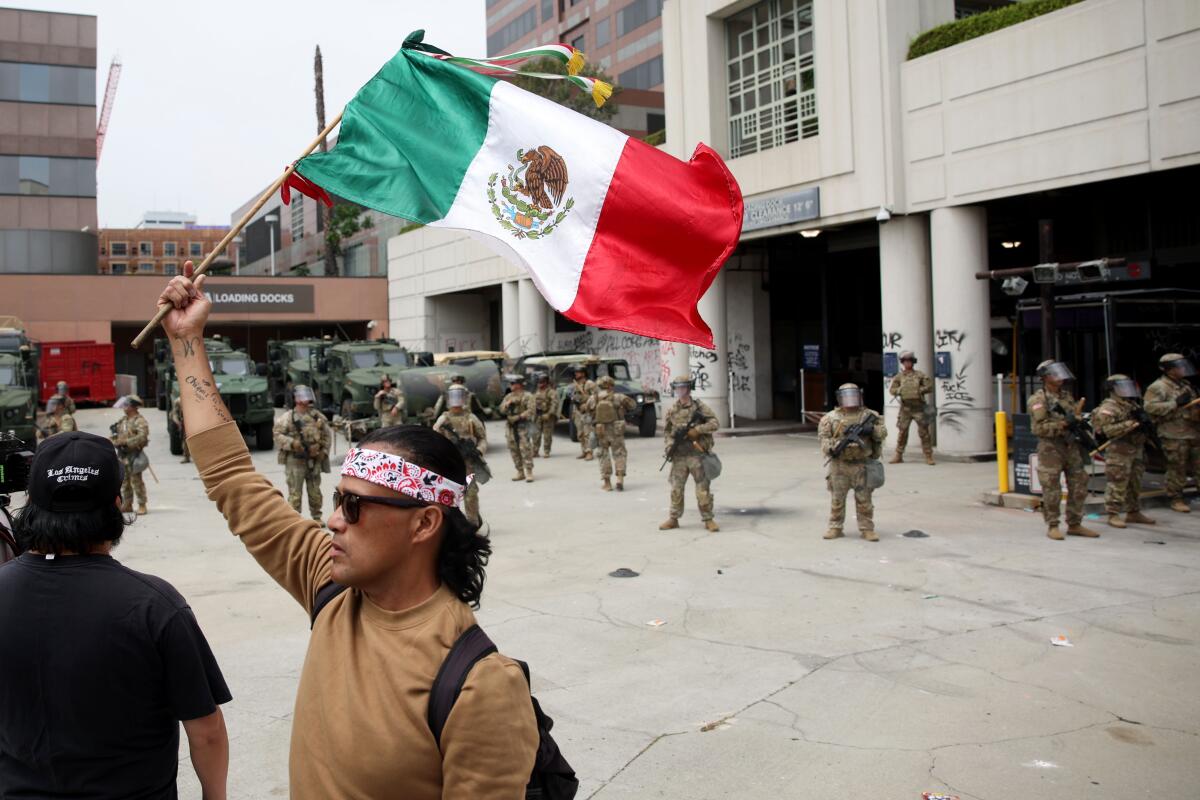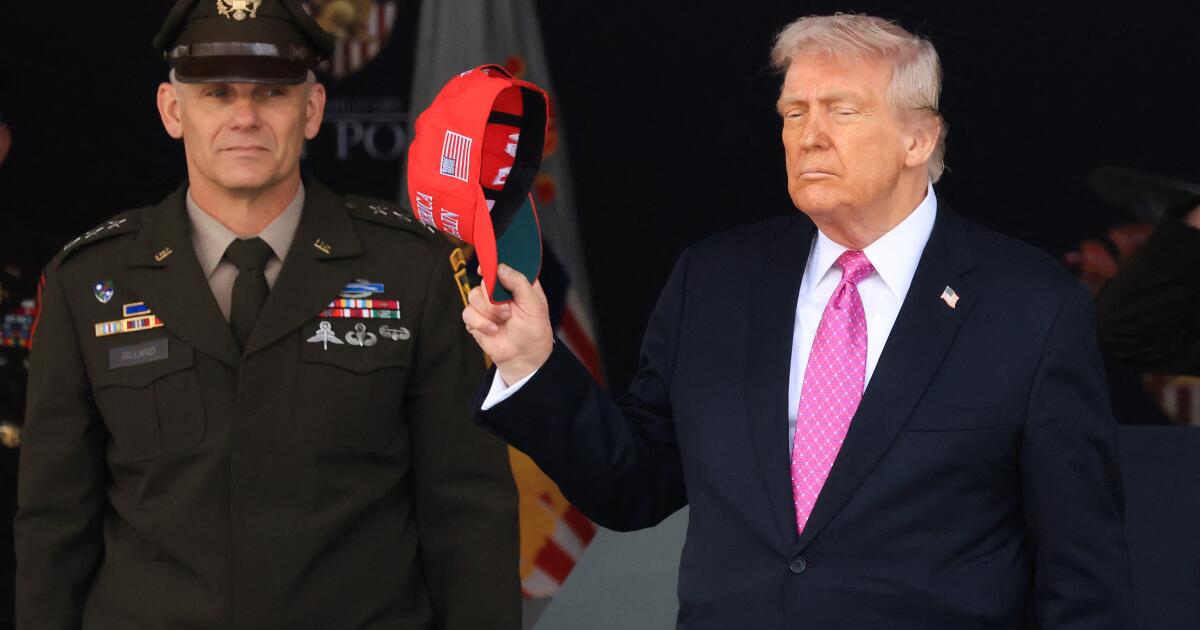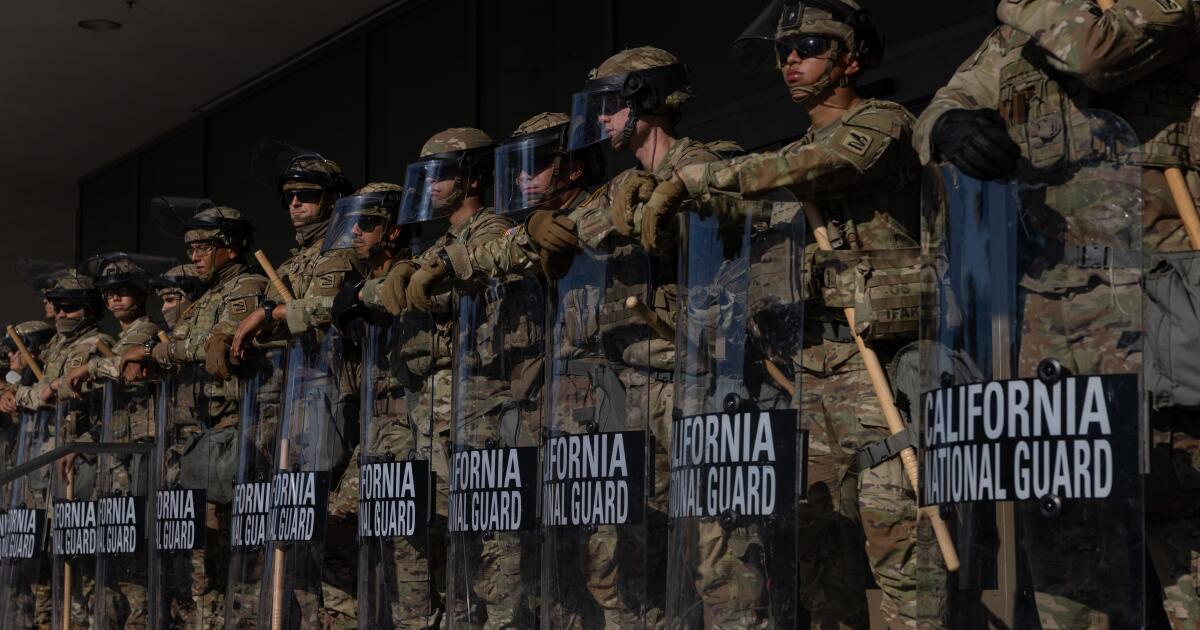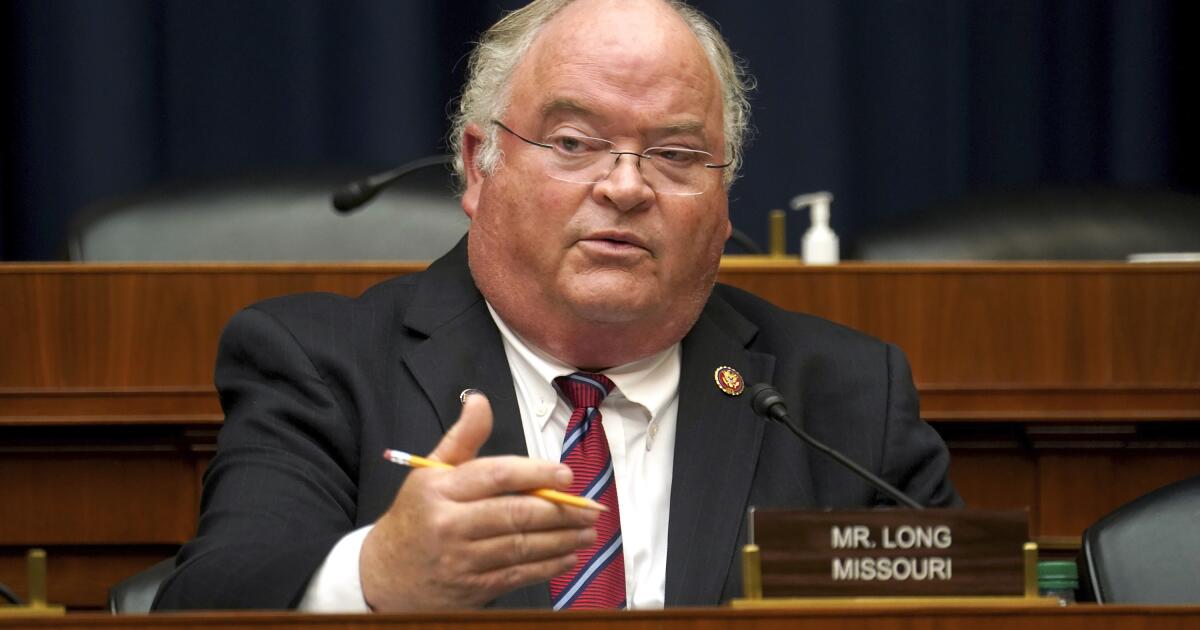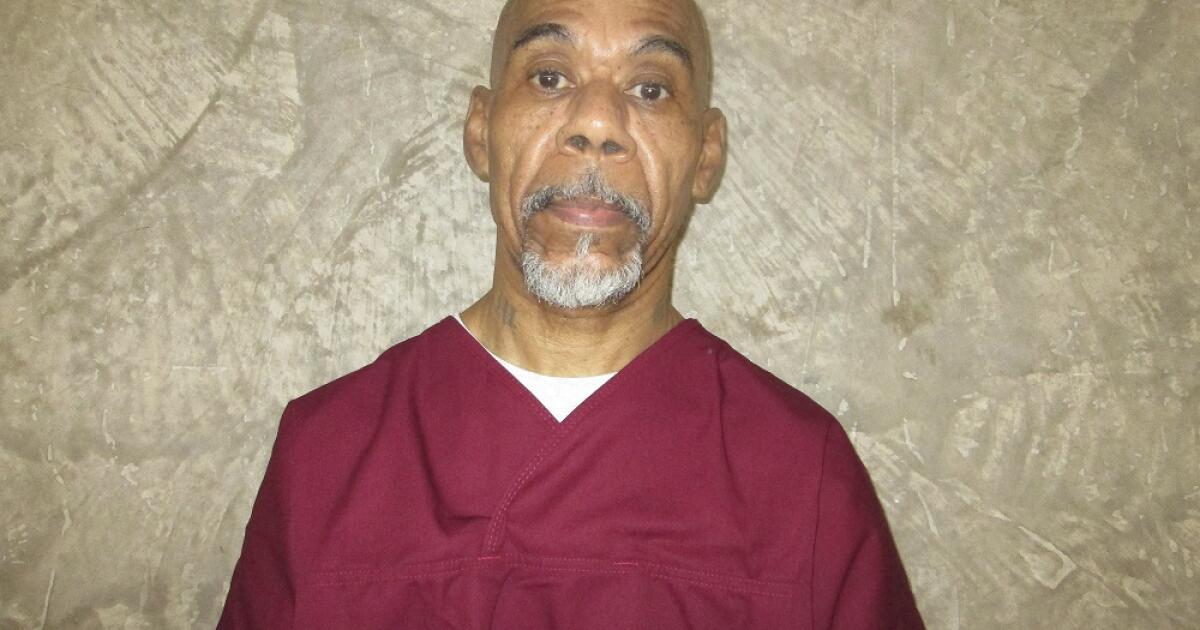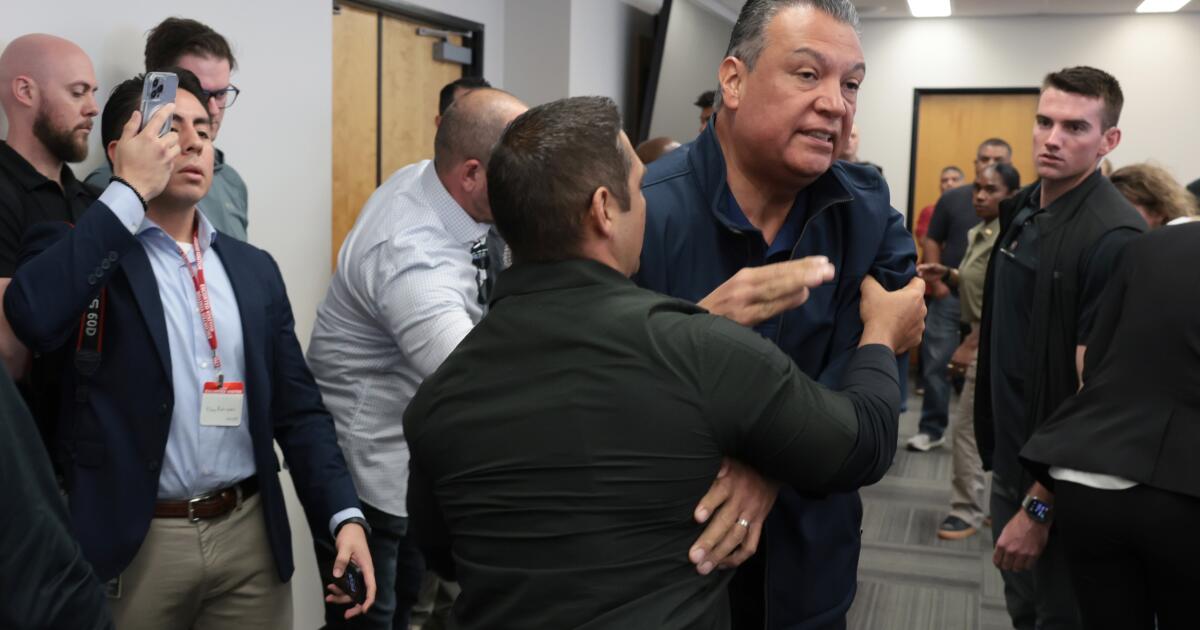Video shows immigration agents interrogating a Latino U.S. citizen
Brian Gavidia was at work on West Olympic Boulevard in Montebello at about 4:30 p.m. Thursday when he was told immigration agents were outside of his workplace.
Gavidia, 29, was born and raised in East Los Angeles and fixes and sells cars for a living. He said he stepped outside. And saw four to six agents.
Within seconds, he said, one of them — wearing a vest with “Border Patrol Federal Agent” written on the back — approached him.
“Stop right there,” he said the agent told him. Then the agent questioned whether Gavidia was American.
“I’m an American citizen,” Gavidia said he told the agent at least three times.
Despite his responses, the agent pushed him into a metal gate, put his hands behind his back and asked him what hospital he was born in, Gavidia said.
Rattled by the encounter, he said he couldn’t remember the hospital.
Video taken by a friend shows two agents holding Gavidia against a blue fence. He tells them they are twisting his arm.
-
Share via
“I’m American, bro!” Gavidia said in the video.
“What hospital were you born?” the agent asked again, this time recorded in the video.
“I don’t know dawg!” he said. “East L.A. bro! I can show you: I have my f—ing Real ID.”
His friend, who Gavidia did not name, narrated the video. As the incident continued, he said: “These guys, literally based off of skin color! My homie was born here!” The friend said Gavidia was being questioned “just because of the way he looks. “
Gavidia said he gave the Border Patrol agent his Real ID, but the agent never returned it to him. The agent also took his phone and kept it for 20 minutes, he said, before finally returning it.
Even after the agent saw his ID, Gavidia said, he never apologized.
In a response to questions from the Times, U.S. Customs and Border Protection did not answer questions about the encounter with Gavidia.
The agency said in a statement that it is “conducting targeted immigration enforcement in support of ICE operations across the Los Angeles area. Enforcing immigration law is not optional — it’s essential to protecting America’s national security, public safety, and economic strength.”
The statement continued: “Every removal of an illegal alien helps restore order and reinforce the rule of law.”
Pressed by The Times for answers about that specific encounter, a CBP spokesperson said: “The statement provided is the only info available about the operation at this time.”
The Department of Homeland Security did not immediately respond to a request for comment.
Gavidia said another friend was arrested that afternoon at the same location. His name is Javier Ramirez, and he, too, is an American citizen. Tomas De Jesus, Ramirez’s cousin and his attorney, said immigration agents had entered a private business, “without a warrant without a probable cause, to warrant entering into a place like that.”
De Jesus said his cousin began alerting people to the presence of the agents. He said he only learned of his cousin’s whereabouts on Friday afternoon and said authorities are accusing him of “resisting arrest, assaulting people.”
“We’re still conducting an investigation to really understand and ascertain the facts of the case,” De Jesus said. De Jesus said he called the Metropolitan Detention Center and identified himself as an attorney wishing to speak with his client, but he was told attorneys were not allowed to see their clients at the moment.
“I was not given permission, I was not given access to even speak to him on the phone,” he said.
Montebello Mayor Salvador Melendez, who watched video of the encounter with Gavidia, called the situation “just extremely frustrating.
“It just seems like there’s no due process,” he said. “They’re just getting folks that look like our community and taking them and questioning them.”
Melendez said he got a call from a resident when immigration agents were on Olympic Boulevard. Melendez said he heard they were going out to other locations in the city, too.
“They’re going for a specific look, which is a look of our Latino community, our immigrant community,” he said.
Gavidia said his mother is Colombian and his father is Salvadoran. They are American citizens.
“He violated my rights as an American citizen,” Gavidia said, his voice shaking with anger as he spoke over the phone from his business Friday. “It was the worst experience I ever felt. I felt honestly like I was going to die. He literally racked a chamber in his AR-15.”
Gavidia‘s clothes were dirty from work, and he said he figured that’s partly why agents questioned him.
“I’m legal,” he said. “I speak perfect English. I also speak perfect Spanish. I’m bilingual, but that doesn’t mean that I have to be picked out, like ‘This guys seems Latino; this guy seems a little bit dirty.’ I’m working, guys. I’m an American. We work. I’m Latino. We work.”
He added: “It’s just scary, walking while brown, walking while dirty, coming home from work, there’s a high chance you might get picked up.”
Gavidia said he still doesn’t have his Real ID back. He went to the Department of Motor Vehicles Friday morning and said immigration agents had stolen his ID. He said he was told he would need to reapply for another one.
“He took my ticket to freedom,” Gavidia said.
